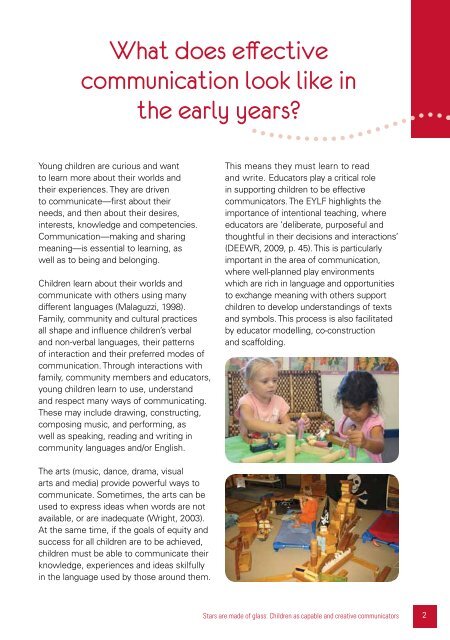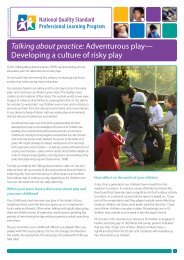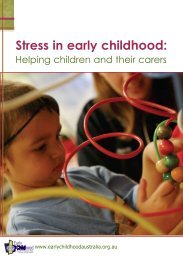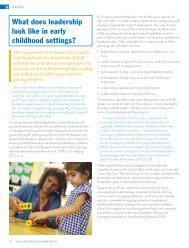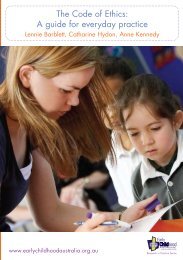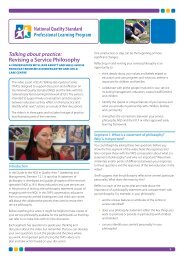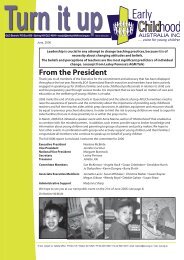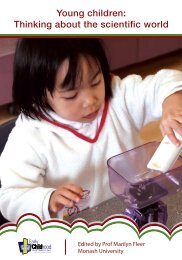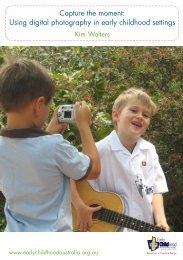Stars are made of glass - Early Childhood Australia
Stars are made of glass - Early Childhood Australia
Stars are made of glass - Early Childhood Australia
You also want an ePaper? Increase the reach of your titles
YUMPU automatically turns print PDFs into web optimized ePapers that Google loves.
What does effective<br />
communication look like in<br />
the early years?<br />
Young children <strong>are</strong> curious and want<br />
to learn more about their worlds and<br />
their experiences. They <strong>are</strong> driven<br />
to communicate––first about their<br />
needs, and then about their desires,<br />
interests, knowledge and competencies.<br />
Communication—making and sharing<br />
meaning—is essential to learning, as<br />
well as to being and belonging.<br />
Children learn about their worlds and<br />
communicate with others using many<br />
different languages (Malaguzzi, 1998).<br />
Family, community and cultural practices<br />
all shape and influence children’s verbal<br />
and non-verbal languages, their patterns<br />
<strong>of</strong> interaction and their preferred modes <strong>of</strong><br />
communication. Through interactions with<br />
family, community members and educators,<br />
young children learn to use, understand<br />
and respect many ways <strong>of</strong> communicating.<br />
These may include drawing, constructing,<br />
composing music, and performing, as<br />
well as speaking, reading and writing in<br />
community languages and/or English.<br />
The arts (music, dance, drama, visual<br />
arts and media) provide powerful ways to<br />
communicate. Sometimes, the arts can be<br />
used to express ideas when words <strong>are</strong> not<br />
available, or <strong>are</strong> inadequate (Wright, 2003).<br />
At the same time, if the goals <strong>of</strong> equity and<br />
success for all children <strong>are</strong> to be achieved,<br />
children must be able to communicate their<br />
knowledge, experiences and ideas skilfully<br />
in the language used by those around them.<br />
This means they must learn to read<br />
and write. Educators play a critical role<br />
in supporting children to be effective<br />
communicators. The EYLF highlights the<br />
importance <strong>of</strong> intentional teaching, where<br />
educators <strong>are</strong> ‘deliberate, purposeful and<br />
thoughtful in their decisions and interactions’<br />
(DEEWR, 2009, p. 45). This is particularly<br />
important in the <strong>are</strong>a <strong>of</strong> communication,<br />
where well-planned play environments<br />
which <strong>are</strong> rich in language and opportunities<br />
to exchange meaning with others support<br />
children to develop understandings <strong>of</strong> texts<br />
and symbols. This process is also facilitated<br />
by educator modelling, co-construction<br />
and scaffolding.<br />
<strong>Stars</strong> <strong>are</strong> <strong>made</strong> <strong>of</strong> <strong>glass</strong>: Children as capable and creative communicators<br />
2


